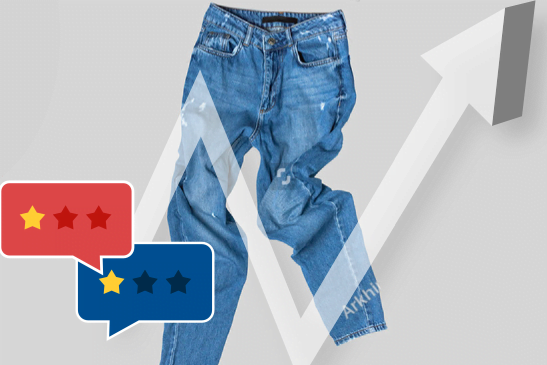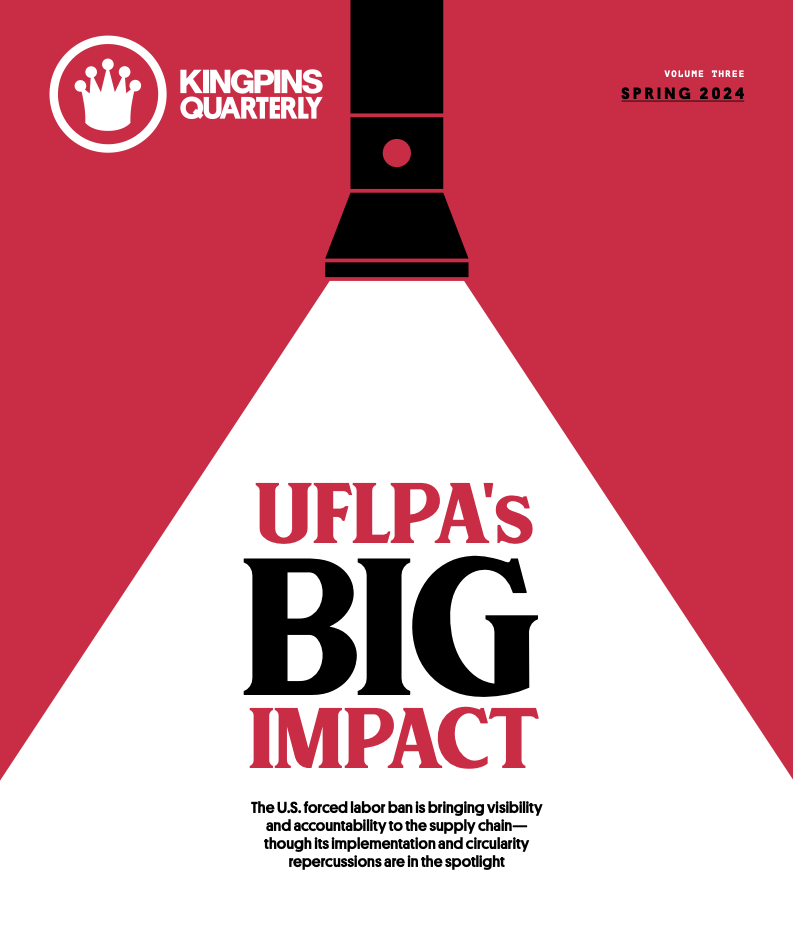A new year brings new opportunities but the question is, how many of the old challenges will make the leap from one year to the next. Looking forward, the good news is retail is by and large in a positive position, which is projected to strengthen toward midyear—particularly so if consumers keep up their spending, the geopolitical environment quiets down and interest rates level off. In the meantime, the relationship between buyers and suppliers continues to evolve as they grapple with inventory management, financing and prices. Here, insiders who finance partners along the supply chain explain what the industry has learned, how strategies are changing and what the next chapter in apparel retail will look like.
“As I look to this holiday season and then into 2024, I think it will look very positive for the wholesale and retail community from a working capital perspective,” said Eric Fisch, national sector head of retail & apparel, corporate banking for HSBC, which works with both large retailers as well as manufacturers, importers and suppliers. “We’re getting hopefully to a point where inventory is returning to historical norms, which is great. Hopefully that leads to less markdowns, more full price sales [and] probably a little bit of scarcity, which is good for the consumer to realize that they should buy now because it may be gone.”
In addition to less of an inventory burden, Fisch said retail is in “a more resilient” place thanks to leaner overhead. “I generally view the industry as being in a relatively reasonable credit profile,” he said citing optimized store counts, shipping costs at 10 percent of their peak and some raw materials like organics on a downward trend. Added to that, more competitive prices from factories all jockeying for orders. That downward pressure on prices equals relief to retailers and consumers alike. “We have some wholesalers selling into mass merchant chains that have actually been able to significantly reduce the price they’re charging,” he said. “So, consumers walking into a mass retailer will actually see the price come down from a year ago.”
While retail is doing well heading into the new year, it’s not without its challenges.
“Financially and credit worthy-wise, it’s been pretty steady, pretty stable from a lender’s perspective,” said Brian Dowd, senior vice president of sales for trade finance firm Tradewind, adding that companies are being cautious—as are lenders. Despite “solid” credit in the market, Dowd said it’s become harder to access capital from banks, especially for small to midsize companies, over the last couple of quarters—and of course the cost of capital is higher.
As a result, suppliers are increasingly less willing to extend credit terms. This puts retailers with liquidity in the driver’s seat. “For buyers, cash is king,” Dowd said. “High interest rates are empowering the stronger buyers right now who have the cash to pay [suppliers] upfront.” Some are using their ability to pay to secure production capacity while others are negotiating discounts on their invoices for immediate payments.
While cash-rich retailers are winning, other merchants are struggling.
“Payments are erratic. Some stores are paying exceedingly well, others are reportedly paying very slow. It’s tougher than it’s been in a long time to get stores to remain current, to make sure we can maintain the credit lines that we have in place for them,” said Gary Wassner, chief executive at fashion factoring firm Hilldun Corporation, specifically referring to the luxury, designer and contemporary space. “People are not getting as much credit here as they were in the past, which further exacerbates the problem and creates more stress on cash flow.”
Inventory Impact
Inventory levels are a major metric that illustrates the industry’s health and dictates merchants’ buying. After coming into the year with too much stock on the books, retailers have been conservative to miserly with orders, prompting everyone along the value chain to make adjustments.
While retailers have been focused on selling through the merchandise on hand, the onus has been on suppliers to accept smaller orders, hold stock or cancel goods. Fisch said it’s been a “challenging” time that’s required banks to be more flexible in their lending arrangements.
“We saw orders cut by anywhere from 5 to 20 percent for clients. Since Covid, everybody’s learned their lesson. Nobody wants to be over-inventoried,” Wassner said. “People did not anticipate this drop in sales. Even though everybody attempted to right- size the inventory, they didn’t do it as well as they had hoped. There’s still some inventory at retail that’s too high and brands have quite a bit of inventory to have to work through since Covid.”
This seesaw between having too much and having too little inventory is nothing new, but Fisch said stores are in a much better position than they have been— and they intend to stay that way. Not only are they ordering less overall, they’re willing to place bets on a percentage of the goods, hoping to be able to get back into product if the sales materialize. Fisch said it’s too soon to know whether their gamble will pay off. It’s predicated on factories being able to adapt to producing rush reorders. “The best way to correct a change in business like that is for the product not to show up. And so, I think if there’s too much demand, retailers will learn that there’s a reason they ordered so far in advance. If there isn’t, then that practice will continue,” he said.
The just-in-time mindset also means suppliers are expected to hold goods until retailers need it— something few can afford to do anymore. So, with retailers unwilling to take a risk and suppliers unable to float the inventory, the industry is leaning more on importers to bridge the gap, according to Dowd. “Retailers don’t want to buy. They want to have an importer handle the purchases from the suppliers and own the inventory, and then the retailer’s buying in a just-in-time model,” he said. “That middleman makes just maybe 2 to 5 percent, maybe 5 to 10 percent margin, and the retailer is the winner at the end of the day.”
Consumers Confidence
Looking ahead to consumer spending in the new year, Fisch is optimistic, saying order sizes are not an indication of a pullback at retail. “Maybe your factory that you’re calling me about had its orders cut in half year over year,” he said. “That doesn’t mean that the consumer in the U.S. is buying half as much as the prior year. It’s just people here in the U.S. are working down product, and hopefully over the next 12 months ordering from overseas will return to a more stable equilibrium.”
Fisch looks to employment numbers, which are strong, as his barometer for shoppers’ willingness to spend. “If it continues as such, then I think we’ll have a strong year across the industry next year with less excess product,” he said.
Dowd shares that positive outlook, especially if Q4 of 2023 closes out well. “This holiday season will be a pretty big test to see if the recent consumer spending is sustainable, given all the current economic conditions. If it is, which I think we’re optimistic it will continue to be good, 2024 will be more optimistic than pessimistic,” he said. “The biggest thing will be how global interest rates shake out.”
Interest rates, which are spiking in many corners of the globe, are on everyone’s radar. While no one expects immediate relief, the hope is that things could move in a positive direction by midyear. “Regardless of what income bracket you’re in, you’re dealing with an interest rate that we haven’t seen in years,” Wassner said, adding that this is having an impact on discretionary spending. “Hopefully, [the Fed] will either not increase them again or perhaps decrease them by a quarter point. That would be a nice boost. It would create optimism in the consumer,” he said.
But interest rates are just one in a long list of issues weighing on shoppers’ today, Wassner noted. The wars in Ukraine and Gaza and the recent spike in tensions between the U.S. and China over Taiwan are all in the headlines and top of consumers’ minds. “All of these components are so negative, and they’ve impacted everyone, both emotionally and financially,” he said. “As they ease, I think second quarter next year we’ll start to see a resurgence again in consumer confidence. We’ll see our retailers getting their footing back, figuring out who they are and who the consumer is. It’s a new consumer than we’ve seen since Covid.”
The one thing retailers know is being safe isn’t going to cut it going forward. “When we have an economy like this, retailers tend to be conservative. They tend to buy what they know works, which means they experiment less with new product, and we’ve seen that in many of the higher end retailers,” Wassner said, calling it a “knee-jerk reaction” that hasn’t helped. “Every retailer I speak to says ‘Yeah, we really need to energize our assortment. We need to add newness.’”




